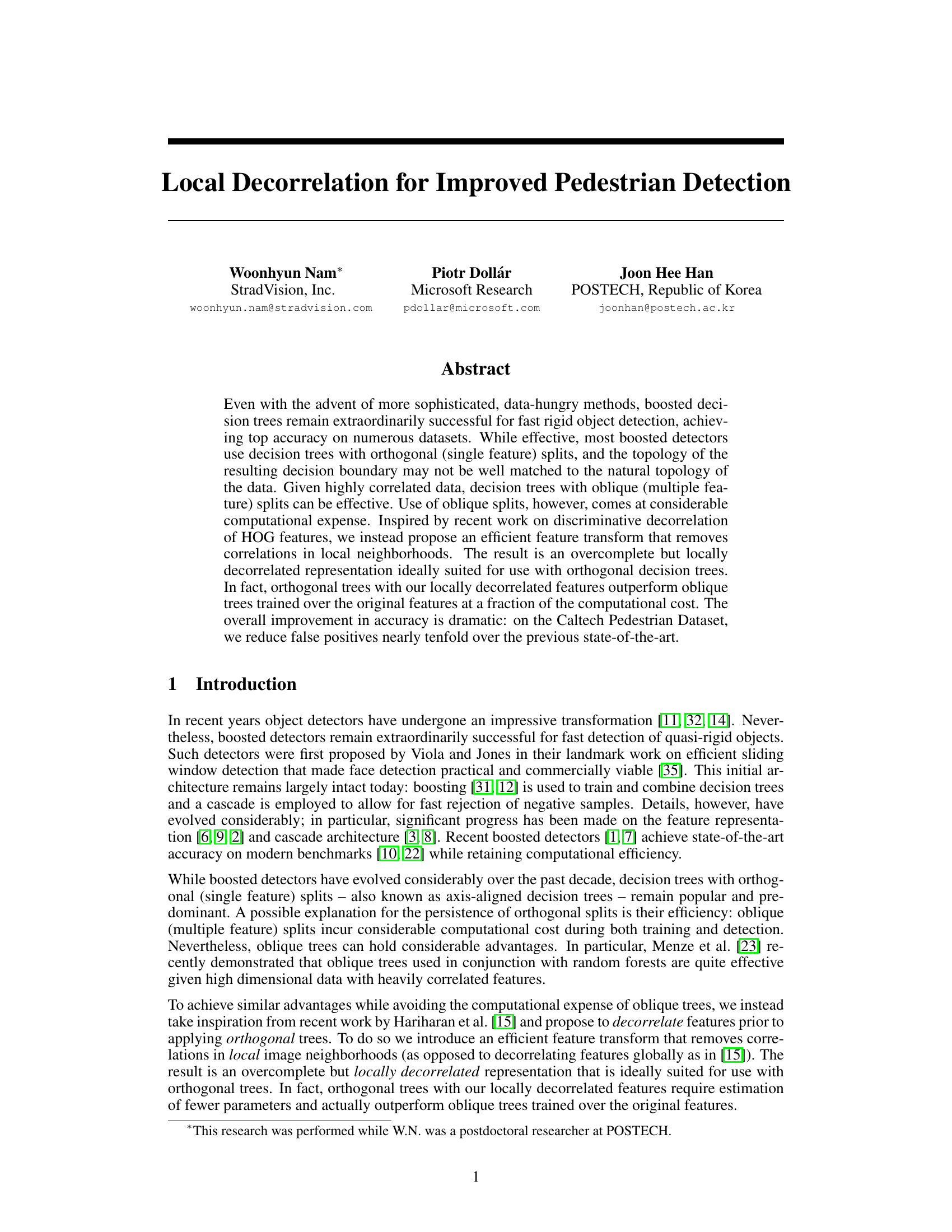Command Palette
Search for a command to run...
{Woonhyun Nam Piotr Dollar Joon Hee Han}

Abstract
Even with the advent of more sophisticated, data-hungry methods, boosted decision trees remain extraordinarily successful for fast rigid object detection, achieving top accuracy on numerous datasets. While effective, most boosted detectors use decision trees with orthogonal (single feature) splits, and the topology of the resulting decision boundary may not be well matched to the natural topology of the data. Given highly correlated data, decision trees with oblique (multiple feature) splits can be effective. Use of oblique splits, however, comes at considerable computational expense. Inspired by recent work on discriminative decorrelation of HOG features, we instead propose an efficient feature transform that removes correlations in local neighborhoods. The result is an overcomplete but locally decorrelated representation ideally suited for use with orthogonal decision trees. In fact, orthogonal trees with our locally decorrelated features outperform oblique trees trained over the original features at a fraction of the computational cost. The overall improvement in accuracy is dramatic: on the Caltech Pedestrian Dataset, we reduce false positives nearly tenfold over the previous state-of-the-art.
Benchmarks
| Benchmark | Methodology | Metrics |
|---|---|---|
| pedestrian-detection-on-caltech | LDCF | Reasonable Miss Rate: 24.8 |
Build AI with AI
From idea to launch — accelerate your AI development with free AI co-coding, out-of-the-box environment and best price of GPUs.